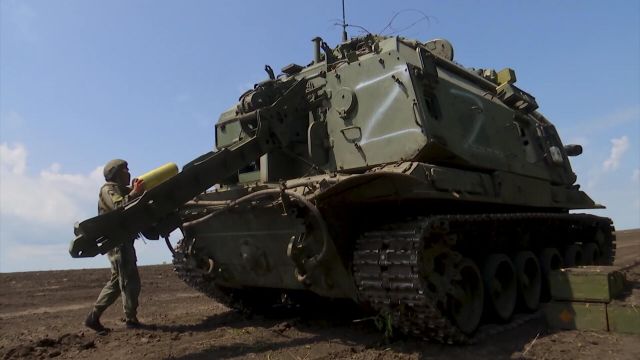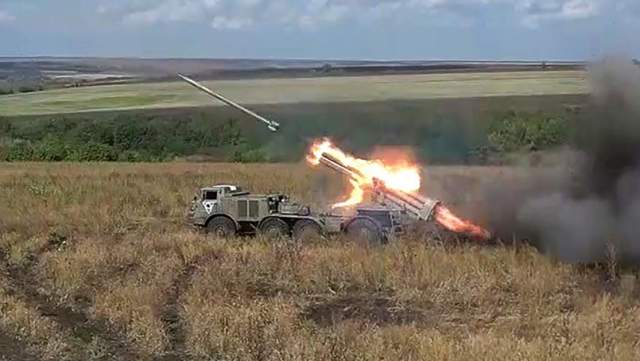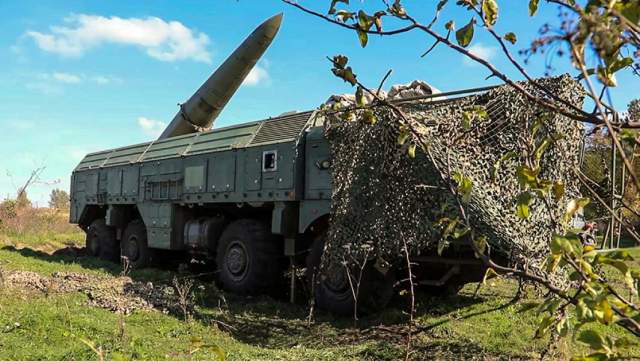We talk about modern samples of Russian artilleryThe Armed Forces of the Russian Federation use all types of artillery and rocket equipment from the Ground Forces — self-propelled and towed howitzers and mortars, multiple launch rocket systems (MLRS) of all calibers, as well as operational-tactical missile systems (OTRCS) with ballistic and cruise missiles in the course of a special military operation (SVO) in Ukraine rockets.
This follows from the analysis of the messages of the Ministry of Defense of the Russian Federation.
On the occasion of the Day of Rocket Troops and Artillery, which is celebrated in Russia on November 19, TASS collected data on the combat use of Russian models of barrel and rocket artillery in special operations, as well as on the prospects for their development.
Barrel artillery
Towed 152-millimeter howitzers "Msta-B", "Hyacinth-B" and D-20, a 122-millimeter howitzer D-30, as well as a 100-millimeter anti-tank gun "Rapira" participate in the special operation from the Russian side. Footage of their combat use has been repeatedly distributed by the military department. The fire from these guns is conducted mainly from closed positions.
In addition, the Armed Forces of the Russian Federation use self-propelled artillery installations "Hyacinth-S", "Acacia" and "Msta-S" 152 mm caliber, "Carnation" 122 mm caliber and 120-mm 2S9 "Nona".
Gunners provide fire support to Russian motorized rifle and amphibious assault units, hit armored vehicles and enemy control points, and successfully participate in counter-battery combat with artillery of the Armed Forces of Ukraine (AFU). In October, the Ministry of Defense of the Russian Federation told about the calculations of "Hyacinths-S", which destroyed a battery of 155-millimeter American M-777 howitzers.
Russian gunners also use weapons of even greater caliber — self-propelled 203-millimeter high-power guns 2S7 "Peony" and its upgraded versions 2S7M "Malka", as well as the world's only self-propelled mortars of 240 mm caliber 2S4 "Tulip". The latter are capable of sending a projectile weighing 130 kg to a distance of up to 18 km . Such powerful artillery weapons are used to defeat enemy armored vehicles, as well as the destruction of well-fortified defensive structures that cannot be destroyed by smaller caliber guns.
MLRS
The well-known MLRS "Grad" of 122 mm caliber is used in combat operations within the framework of the SVO. The Russian military department described the scenario of its use — the gunners strike at the scouted targets, then the T-72 tanks enter the battle, destroying the armored vehicles of the Armed Forces of Ukraine, and the assault groups block and capture enemy positions.
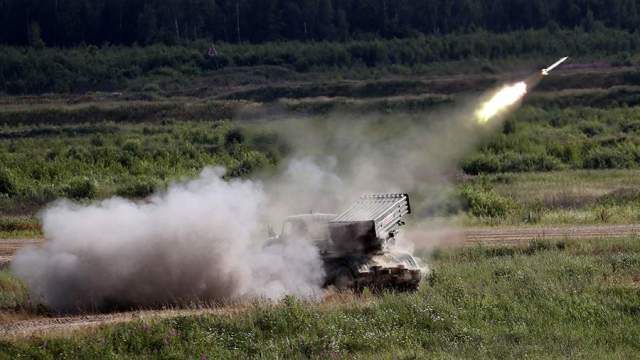 |
| Multiple launch rocket system "Tornado-G". |
| Source: Photo: TASS/EPA/MAXIM SHIPENKOV |
A modernized version of the Grad is also used — the Tornado-G MLRS, which are delivered to parts of the Armed Forces of the Russian Federation as part of the state defense order. The system is distinguished from its predecessor by the increased power of ammunition, increased firing range (up to 40 km), automated means of guidance and aiming, modern equipment for topography and navigation. In terms of its combat effectiveness, Tornado-G surpasses the capabilities of the Grad MLRS by 2.5–3 times.
The 220 mm caliber is represented in the special operation by the "Hurricane" system. The launcher has 16 guides, the maximum firing range is 34 km. The MLRS is firing at areas of concentration of Ukrainian forces, command posts and fortifications, participates in counter-battery fighting.
So, in October, the Ministry of Defense of the Russian Federation published a video report telling about the calculation of the MLRS "Hurricane", the deputy commander of which hit over 100 targets. Thanks to the work of the installation, the promotion of Russian assault groups and motorized rifle units was ensured.
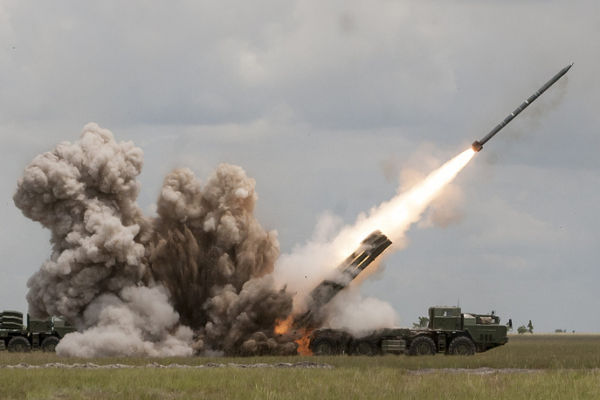 |
| The Smerch multiple launch rocket system of 300 mm caliber. |
| Source: EPA/SANTI DONAIRE |
The largest-caliber MLRS in the area of operation is the 300-millimeter Smerch installation, capable of hitting targets at a range of up to 70 km. The launcher has 12 guides, the weight of each projectile is 800 kg. Calculations of the system strike at the concentration of Ukrainian military equipment and weapons, ammunition depots.
OTRK
Iskander-M is being used quite successfully and effectively during the special operation of the Armed Forces of the Russian Federation in Ukraine. They are designed to destroy important targets at a distance of up to 500 km — missile systems and multiple launch rocket systems, long-range artillery, command posts and communication centers, as well as aircraft and helicopters at the airfield. The complex is equipped with two main types of missiles: the quasi-ballistic 9M723 with electronic warfare modules for radio interference and the ability to control the entire flight path and the cruise P-500, capable of automatically skirting the terrain when flying at low altitude, which makes it invulnerable to air defense systems.
As an example of the effective use of Iskander, a direct hit of its missile in August into a Ukrainian military echelon in the Dnipropetrovsk region can be called. Then more than 200 reservists of the Armed Forces of Ukraine who were en route to Donbass were destroyed, as well as ten units of military equipment.
The use of UAVs and high-precision ammunition
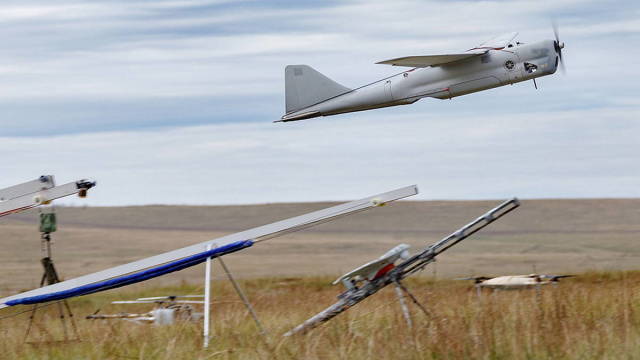 |
| Russian UAV "Orlan-10". |
| Source: invoen.ru |
Since the beginning of the special operation in Ukraine, Russian gunners have been widely using unmanned aerial vehicles (UAVs) to adjust the fire. The commander-in-chief of the Russian Ground Forces, Army General Oleg Salyukov, in an interview with the newspaper Krasnaya Zvezda, listed the complexes with UAVs that have proven themselves well in their own: Orlan-10, Orlan-30 and Aileron-3.
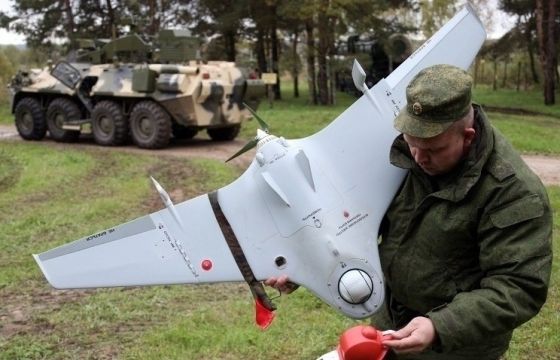 |
| UAV "Aileron-3SV". |
| Source: http://tass.ru/ |
Self-propelled 152-millimeter artillery installations "Msta-S" are firing at the AFU targets with high-precision corrected projectiles with laser guidance from the Krasnopol complex. The Ministry of Defense of the Russian Federation announced the use of UAVs for target designation — as a rule, armored vehicles or fortifications. "Krasnopol" allows you to destroy the target with a direct hit from the first shot.
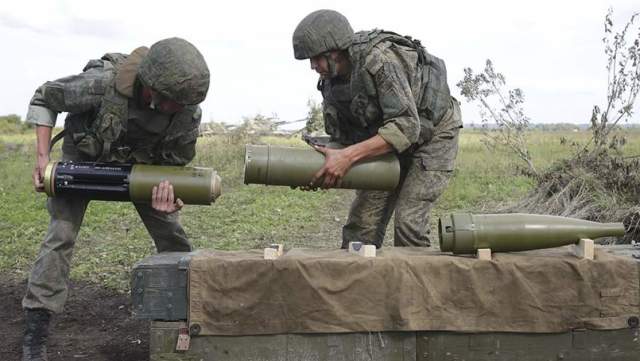 |
| The servicemen collect the corrected artillery ammunition "Krasnopol". |
| Source: Photo: TASS/Kirill Kukhmar |
According to TASS sources, in addition to Krasnopol, ultra-precise indestructible guided 120-millimeter mines "Gran" and 122 mm artillery shells "Kitolov" are also used.
The editor of the publication "Arsenal of the Fatherland" Alexey Leonkov, in an interview with TASS, said that the Russian military-industrial complex (MIC) has developed and is using a guided projectile "Krasnopol-2" in Ukraine. The military expert also recalled that the Armed Forces of the Russian Federation have a Tornado-C system with a high-precision projectile, which is called an analogue of the American HIMARS ("Himars"). "The rocket of the Tornado-S complex flies at a range of 120 km, and Haimars are used at a range of about 80 km. And the result is about the same, that is, objects are definitely affected," Leonkov said.
Prospects for the development of artillery complexes
"Local conflicts in Syria, Nagorno-Karabakh and <...> in the zone of a special military operation show that artillery is the main type of destruction and destruction of objects, enemy manpower and armored vehicles. I'm not talking about missile systems, multiple launch rocket systems," Leonkov expressed his opinion.
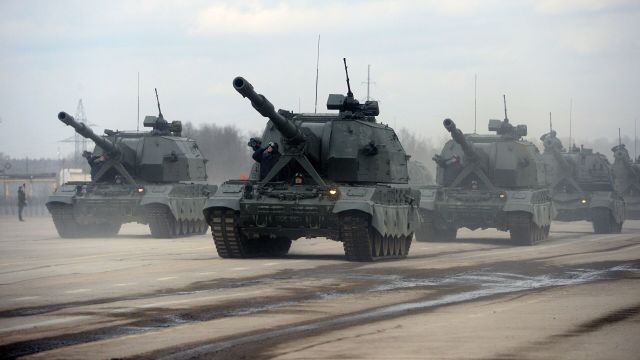 |
| Self-propelled artillery installation (ACS) "Coalition-SV". |
| Source: © RIA Novosti / Ilya Pitalev |
In August, the Ministry of Defense of the Russian Federation signed a contract for the supply of the latest self-propelled artillery units (ACS) "Coalition-SV" with an uninhabited combat compartment to the troops. The ACS is equipped with a modern 152 mm cannon with a firing rate of more than 10 rounds per minute, as well as a modern automation system for the processes of gun guidance, target selection and navigation.
As part of the development work, the development of a whole line of samples of highly mobile artillery and mortar weapons on various types of chassis, including self-propelled artillery guns "Malva" and "Phlox", self-propelled mortar "Drok" is being completed. High-precision ammunition is also being upgraded.
The editor of the Arsenal of the Fatherland noted that artillery troops increasingly include high-precision complexes that work not only as an independent combat unit, but also as part of reconnaissance and strike complexes. At the same time, intelligence means transmit coordinates, and fire damage is inflicted on them with high-precision ammunition or operational-tactical missile systems.
"All this suggests that artillery remains the main conductor on the battlefield, that is, in modern combined arms combat, but at the same time it is being improved. The improvement is just in the direction of creating high—precision complexes, when artillery systems, multiple launch rocket systems and missile systems will use high-precision ammunition, which will allow them to get better results with less consumption," Leonkov concluded.
Prepared by Viktor Bodrov

